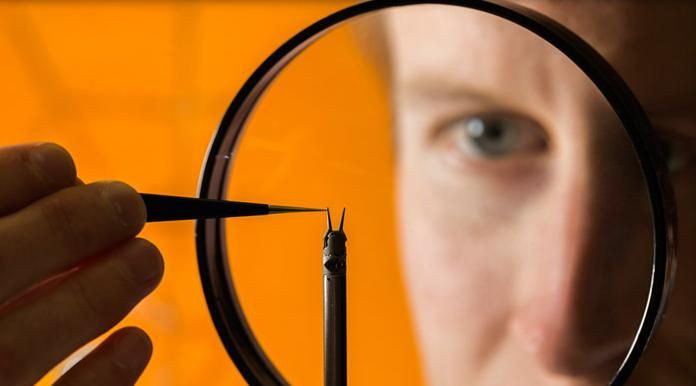3D-Printed, Origami-Inspired Surgical ‘Mini’ Tools Allow For Smaller Incisions, Less Invasive Operations

When it comes to surgical tools, most of us might imagine them sharp, strong, and probably made of steel. Origami, on the other hand, doesn’t usually come to mind. Good thing engineers from Brigham Young University don’t think that way. They’ve created miniature surgical tools inspired by the Japanese papercraft’s process of folding and unfolding in the hope of making surgery far less invasive.
"The whole concept is to make smaller and smaller incisions," BYU mechanical engineering professor Larry Howell said in a press release. "To that end, we're creating devices that can be inserted into a tiny incision and then deployed inside the body to carry out a specific surgical function."
To do this, Howell and his colleagues teamed with Intuitive Surgical, the creator of the da Vinci Surgical System, a robot that helps surgeons work. The team explained in a paper in the journal Mechanical Sciences how it designs its tools to fit through small openings and then expand once they’re inside.
One of the first devices they built drew inspiration from the origami pattern called chompers. The team’s device can handle a needle for suturing or hold blood vessels while the surgeon works elsewhere. The team shrank the device down so it was able to fit in a hole the size of two pennies held together.
"These small instruments will allow for a whole new range of surgeries to be performed — hopefully one day manipulating things as small as nerves," Spencer Magleby, a mechanical engineering professor at the university, said in the release. "The origami-inspired ideas really help us to see how to make things smaller and smaller and to make them simpler and simpler."
The team can work with prototypes much faster thanks to 3D printing. It “allows us to experiment with a shape or prototype very quickly,” Magleby said in the video below. “I can have an idea from the computer to the 3D printer and into our lab for a look in less than a day.”
The team found 3D printing also reduces the number of parts a device requires to a third or a quarter of those needed in traditional surgical tools. And the complexity of these parts is lower thanks to the movement abilities inherent in origami pieces. Take, for instance, the chomper. When closed, the piece can be slim and flat. But inserting fingers into built-in slots opens it up so it can grab different objects.
The concept of creating a device that starts small and grows large comes from the team’s work with NASA. Space is tight when traveling out of orbit, so the ability to shrink a solar array or an antenna to half its size is hugely beneficial.
“Our big idea is that we can make things smaller and smaller by using inspiration of things like origami that are very simple,” Magleby said. So, instead of trying to make that complexity smaller and smaller, we’re going for simplicity early.”
The idea of shrinking tools to make surgery less invasive is a good one. Though death rates from complications of surgery have declined in recent years, the Centers for Disease Control and Prevention say there are about 51.4 million surgeries done every year. The team hopes to make these surgical procedures as safe as possible so that one day, incisions will be so small the body will heal on its own, no sutures needed.
Source: Morgan M, Lang R, Magleby S, Howell L. Towards developing product applications of thick origami using the offset panel technique. Mechanical Sciences. 2016.



























